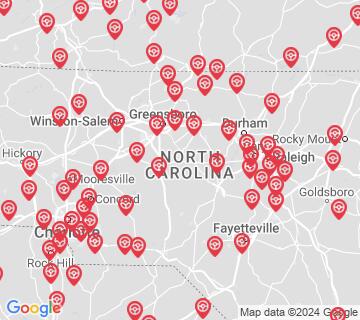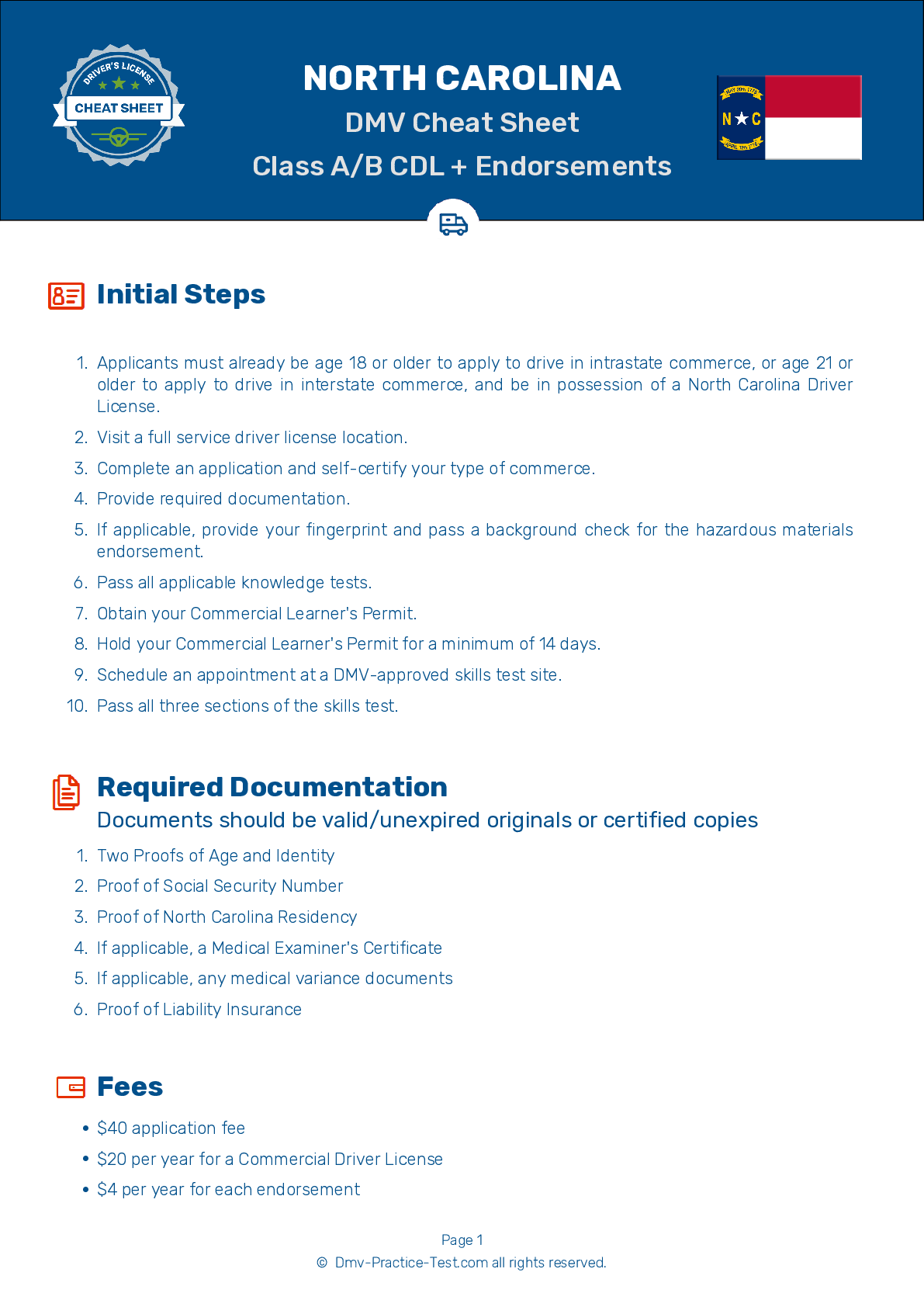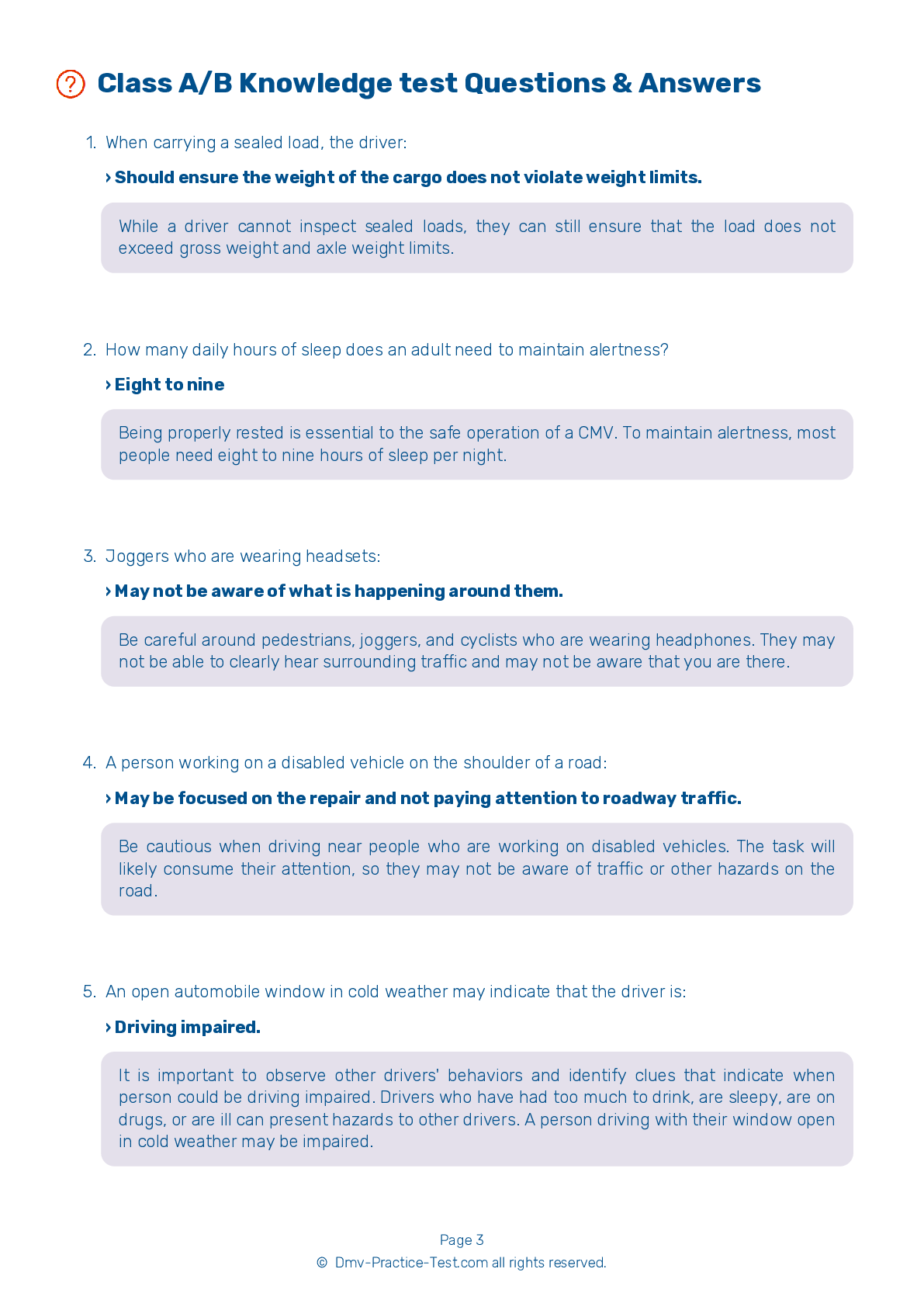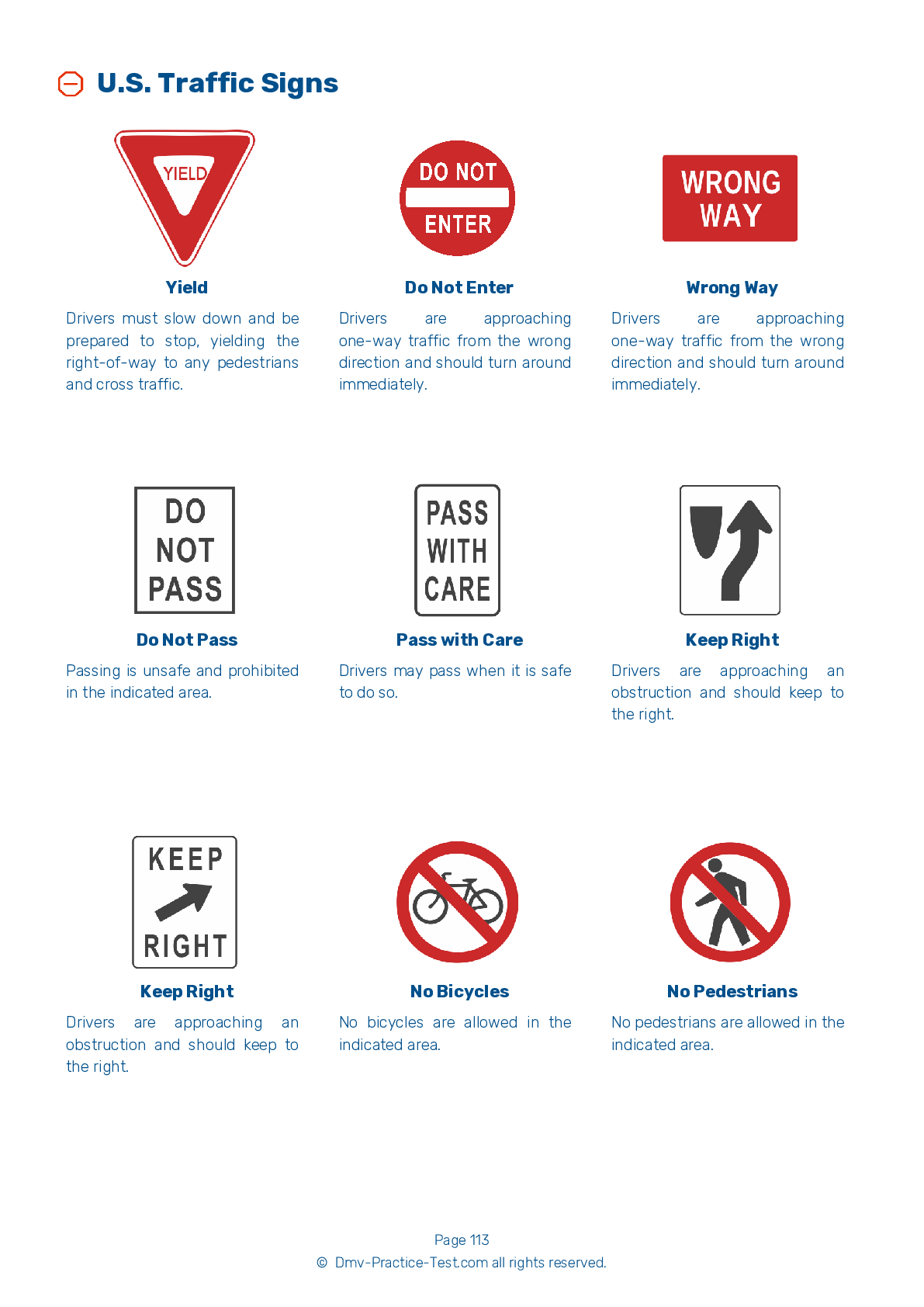HazMat #2
Hazmat Test | North Carolina 2025 #2 Page 2 of 5
On our website, we provide FREE practice - CDL hazmat test online! The official exam test consists of several obligatory parts, with all of them checking your knowledge of different blocks of road rules. If you need to obtain a NC CDL hazmat endorsement in 2025, practice as much as possible. Free sample tests published on our website will help you check and improve your knowledge and boost your grades. Please bear in mind that North Carolina requirements for issuing a hazmat endorsement for CDL may vary from those established in other states.
30
24
20
7 . What should a carrier do if hazardous materials are not properly prepared?
Refuse the shipment
It is the responsibility of a carrier to refuse improper shipments of hazardous materials.
8 . Class 1, Class 2.1, and Class 3 materials should not be placed in a trailer with:
The use of cargo heaters is not always permitted. When transporting materials that are categorized as Class 1 (Explosives), Class 2.1 (Flammable Gases), or Class 3 (Flammable Liquids), the use of heaters in the same space is generally prohibited.
9 . During a cargo fire, opening the trailer doors may actually cause the fire to expand because doing so:
When experiencing a cargo fire, it may be a bad idea to open the doors to the trailer. Doing so allows oxygen to enter the area, potentially causing the fire to flare up and expand.
10 . If a shipping paper describes both hazardous and non-hazardous materials, the hazardous materials may need to be:
If a shipping paper describes both hazardous and non-hazardous materials, the hazardous materials must be distinguished in one of three ways. They must be entered first on the shipping paper, highlighted in a contrasting color, or properly marked with an "X" in a column titled "HM."
11 . A Class 7 hazardous material is:
Corrosive.
Radioactive materials are categorized as Class 7 hazardous materials.
12 . When traveling with Division 1.1, 1.2, or 1.3 explosives, the vehicle should not be:
Parked on grass.
Except when parking briefly to perform necessary functions for vehicle operation (such as refueling), never park a vehicle carrying Division 1.1, 1.2, or 1.3 explosives within 300 feet of a bridge, tunnel, or building. Never park such a vehicle within five feet of the traveled portion of a road. Such vehicles should be parked only briefly.
Search the best driving school in your neighbourhood
2025 North Carolina | Frequently Asked Questions
To secure a CDL Bus endorsement in North Carolina, you must first possess a valid Commercial Driver's License (CDL). Then, pass the Passenger Transport Test and the School Bus Endorsement Test. You'll also need to pass a background check, submit to a physical examination, and complete specialized training. Finally, you'll need to pass a driving skills test in the type of bus you wish to drive.
To obtain a CDL Bus license in North Carolina, you need to be at least 21 years old, possess a valid driver's license, and pass a physical exam. You must also complete a commercial driver's education course and pass both the written and driving skills tests. A background check is also required. Finally, pay the necessary fees to receive your license.
Yes, specific training is necessary for a CDL Bus endorsement. This includes passing the Passenger Transport Test and the School Bus Endorsement Test. In addition, you must complete specialized training that focuses on driving a bus safely. This training typically covers topics like loading and unloading passengers, managing student behavior, and emergency procedures.
CDL Bus licenses are classified under the general CDL categories of A, B, and C. Class A CDL isn't typically used for buses. Class B CDL is for single vehicles like city buses. Class C CDL is for vehicles designed to transport 16 or more passengers, including the driver, like school buses. Each requires a Passenger (P) endorsement.
No, you cannot use your personal vehicle for the CDL Bus driving test in North Carolina. The vehicle used for the test must match the class and type of vehicle you plan to drive with your CDL. For a bus endorsement, this means taking the test in a commercial bus.
During the CDL Bus driving test, several skills and maneuvers are evaluated. These include pre-trip vehicle inspection, basic vehicle control, and on-road driving. You may be asked to execute specific maneuvers such as turning, merging, backing up the bus, and navigating intersections. The examiner will also assess your ability to control the bus under various traffic conditions.
Yes, additional medical prerequisites are required for a CDL Bus endorsement. Applicants must pass a Department of Transportation (DOT) physical examination every two years. This exam includes hearing and vision tests, blood pressure checks, and assessments for other medical conditions that could affect driving ability, such as diabetes or heart conditions.
No, it is not permissible to transport passengers without a valid CDL Bus endorsement in North Carolina. This endorsement is required for drivers who wish to operate a vehicle designed to carry 16 or more passengers, including the driver. Driving without the proper endorsement can result in fines and penalties.
You can add a CDL Bus endorsement to your existing commercial driver's license. You don't need to apply for a new license, but you will have to pass the passenger vehicles knowledge test and a skills test in the type of vehicle you will be driving. You'll also need to complete any necessary medical certifications.
Yes, drivers with a CDL Bus endorsement must adhere to certain restrictions and limitations. These include following hours-of-service regulations, passing regular medical examinations, and maintaining a clean driving record. Additionally, bus drivers must not have any serious traffic violations while operating commercial vehicles and are subject to random substance abuse testing.




